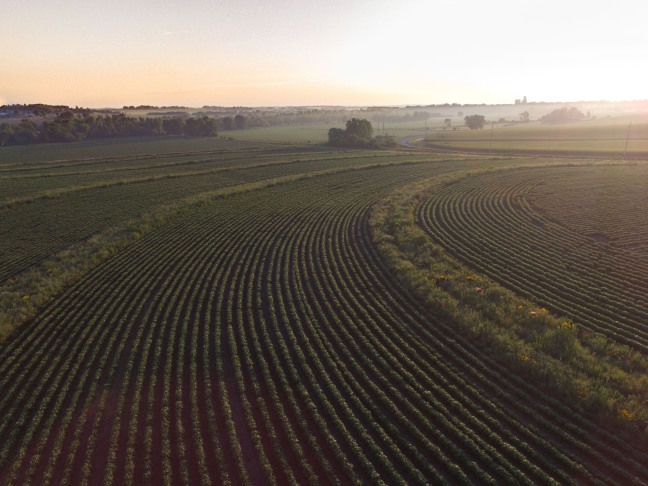Farmers to install prairie strips on land
January 20, 2020
Farmers in the U.S. will be able to collect federal conservation payments for installing prairie strips on their land, according to a news release.
Researchers at Iowa State helped to bridge the gap between the latest science and federal policy. Scientists at Iowa State have been conducting prairie strips research for more than 10 years. A range of environmental benefits associated with the practice have been documented.
The 2018 Farm Bill named prairie strips as a conservation practice eligible to participate in the Conservation Reserve Program for the first time.
Prairie strips is the strategic planting of small amounts of prairie within corn and soybean fields. These prairie strips reduce soil and nutrient loss from steep ground, provide habitat for wildlife and improve water infiltration.
A 2017 Iowa State study found converting as little as 10 percent of the cropped area to prairie conservation strips — compared with all-crop watersheds — reduced soil loss by 95 percent and phosphorus losses in surface runoff by 70 percent. The bird abundance and pollinator more than doubled.
The news release said most conservation practices aim for a single measurable benefit, but Iowa State experiments show prairie strips address multiple concerns.
Lisa Schulte Moore, professor of natural resource ecology and management, is a scientist on the Science-based Trials of Rowcrops Integrated with Prairie Strips (STRIPS) team. Schulte Moore said prairie strips are among the least expensive conservation practices on a per-acre basis.
“The 2018 Farm Bill sent a clear signal from Congress and the White House that this is the direction we want our farm conservation programs to go,” Schulte Moore said in the news release. “We’ve heard from farmers who have been waiting so they can sign up portions of their fields for prairie strips. With last year’s heavy rainfall events, they are looking for good options to both slow erosion and deal with challenging acres.”
New signups for the Conservation Reserve Program opened in early December. U.S. farmers will receive a yearly rental payment from the Conservation Reserve Program for converting environmentally sensitive land from production and establishing conservation practices on that land.
Prairie strips are now an official practice under the Conservation Reserve Program Clean Lakes, Estuaries and Rivers Initiative (CLEAR). The initiative prioritizes water quality practices on the land that will help reduce sediment loadings, nutrient loadings and harmful algal blooms, according to the United States Department of Agriculture.
When developing a policy to implement this law, the United States Department of Agriculture sought input from Iowa State researchers who, over the last decade, developed much of the science on prairie strips, according to the news release.
The new prairie strips policy has been approved by the United States Department of Agriculture. Farmers can offer to apply prairie strips through the ongoing Conservation Reserve Program signup, located at their local United States Department of Agriculture Service Center.
Omar de Kok-Mercado, program coordinator in the natural resource ecology and management department, coordinated the efforts of the STRIPS team to develop technical specifications for the prairies strips policy.
“The new rules specific to prairie strips will provide greater clarity, flexibility and reliability for farmers who want to implement the practice,” de Kok-Mercado said in the news release.
Iowa State’s contribution to the policy development process of the Conservation Reserve Program required translating experimental findings to real-world management guidelines. This meant farmers could understand it and it be implemented by policymakers.
Farmers can find out more about prairie strips and the Conservation Reserve Program by visiting their local United States Department of Agriculture Service Center.







